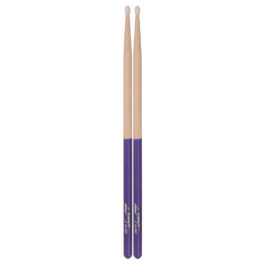
One of the first exercises that most drummers first master is how to play paradiddles. But what exactly are paradiddles, and how do you play them? In this free lesson, we will take a look at the basics of paradiddles.
In order to work through this lesson, all you need is a set of drumsticks, a practice pad, and a metronome. With those three items, you can take your practising anywhere you go. If you are a cajon or djembe player, you can also play paradiddles, but all you would need to practise on the go are your hands and a leg.
Shop Drumsticks and Practice Pads
-
Birthday Sale Deal!
-
- Out of Stock
- Drums & Percussion, Sticks & Mallets
Zildjian 7A Nylon Tip Purple Dip Stick
-
R269R230 - Select options
-
What are Paradiddles
A paradiddle is a type of drumming rudiment. In this content, rudiment means both “basic” and “fundamental”. So, while the rudiments are the first thing most drummers learn, they are also something that they will carry with them for the rest of their drumming lives.
The word Paradiddle is a pneumonic device to help you count the pattern. The usual sequence for a paradiddle goes* R-L-R-R followed by L-R-L-L. As you say each of the syllables in the word, you would play a stroke.
So your pattern would go PAR- (right-hand stroke) A – (left-hand stroke) DI – (right-hand stroke) DLE (right-hand stroke). You would then repeat the pattern, but you would start with a left-hand stroke.
The double stoke at the end of the pattern is called the diddle.
The Single Paradiddle
Two alternating notes followed by a diddle. The single paradiddle is the most common drum rudiment. It is most often used while played drum beats, drum fills, and some drum solo patterns. It is the most essential rudiment for any drummer to learn.
R-L-R-R then by L-R-L-L
The Double Paradiddle
Double paradiddles are played with four alternating notes followed by a diddle.
R-L-R-L-R-R then L-R-L-R-L-L
The Triple Paradiddle
Triple paradiddles are played with six alternating notes followed by a diddle.
R-L-R-L-R-L-R-R then L-R-L-R-L-R-L-L
The Paradiddle-Diddle
Paradiddle-Diddles are played with two alternating taps followed by two alternating diddles.
R-L-R-L-R-R-L-L then L-R-L-R-L-L-R-R
*R= Right-hand stroke. L = Left-hand stroke.










